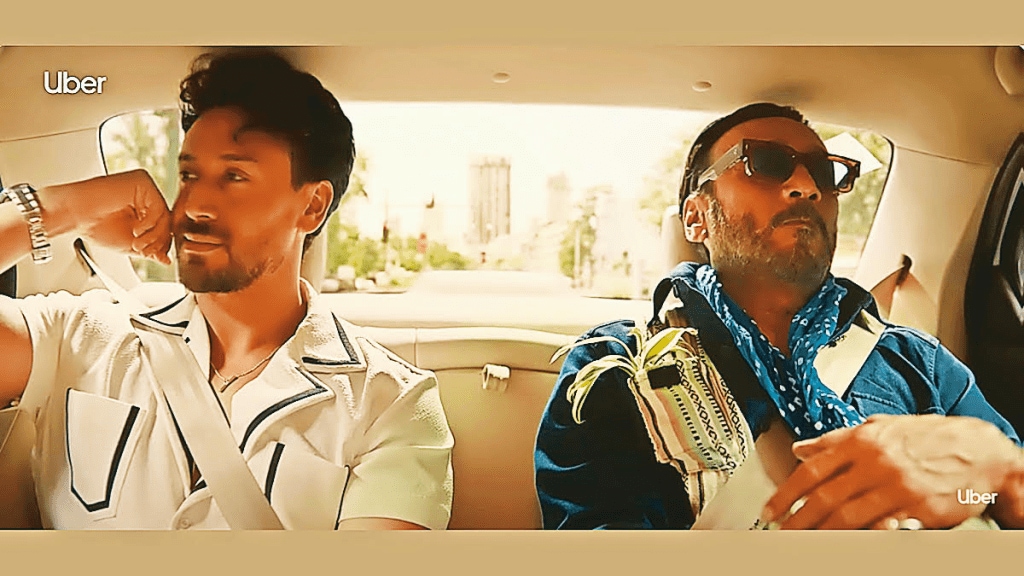Conventional wisdom suggests your brand ought to engage the right person with the right message at the right time to stay top of mind. So who is Uber targeting with its new campaign in which veteran actor Jackie Shroff and his son Tiger are seen deliberating on urban mobility? Given that the early adopters of its services in India were working professionals with smartphones — people who wanted a comfortable ride — is Uber veering off course?
The campaign highlights a classic universal insight —parents believe that the next generation has it all easy, says Ameya Velankar, head of marketing, Uber India. “Parents tend to feel that they were able to rise in life because of struggle. While struggle is important, Uber is saying there is a simpler way to move,” he adds.
Making the ad relatable without implying that the father in the story is “old” is definitely a smart way to approach the senior market, say experts. Remember ‘Pappu Pass Hogaya’, Cadbury’s iconic ad from the 2000s? Or Gems’ ‘Pikla Pikla Ping Ping: Raho Umarless’? Both these brands ended up widening the market by putting older consumers at the centre of the story.
It is worth noting that some of the most popular cross-generational campaigns to have come out of India were from the 90s and early 2000s. While Amul took it a step ahead with a light, quirky ‘Doodh Hai Wonderful’ jingle, Zandu Balm hit the nail on the head with an out-and-out emotional campaign about a young daughter tending to her mother who is experiencing an excruciating headache.
Given that the older consumer cohort tends not to switch brands that easily, such a shift makes sense. “When we celebrated our 10th anniversary in India last year, we committed ourselves to being a ride for every Indian,” says Velankar. Agrees Yorick Pinto, senior creative director at BC Web Wise, “Uber is targeting anybody who wants convenience and the simplicity of booking a cab whenever they want.”
The thing is, India is a key market for Uber. But while Uber and Ola continue to dominate app-based ride hailing market in India with a combined share of about 70%, competition is increasing from players such as Rapido, BluSmart and InDrive and other hyperlocal operators.
With the presence of old-timer Jackie Shroff, the campaign has already garnered over 5 lakh views in one day. Agnello Dias, co-founder of Spinach Experience Design, points out that in the world of advertisement, nostalgia always sells. “Brands can ride on endearing cultural icons to bridge these generational gaps,” he adds.Still, Madhu Viswanathan, associate professor of marketing, Indian School of Business, points out, “The campaign is unconventional as there is no nostalgia associated with Uber between both generations. This may be trying to capture different familial bonding experiences as opposed to cross-generational experiences.
“Focussing sharply on demography, however, will not be enough for firms taking a long-term approach to a market. Santosh Sreedhar, partner, Avalon Consulting, says, “When we put cross-generational marketing in focus, we are starting with the assumption that demography is primary. However, there can be a segmentation based on usage occasions such as office commutes, family trips, etc. There can also be segmentation based on psychographic profiling on their attitude towards lifestyle, convenience, emergencies etc.”
Also, addressing different segments will require different media placements. “For the young generation, they would need to use social media campaigns, influencer partnerships, and gamification techniques, with an emphasis on speed, convenience, and affordability,” says Rohit Vishal Kumar, associate professor of marketing, strategy & general management, International Management Institute Bhubaneswar (IMI Bhubaneswar). “For the older generations, it must rely on traditional media like newspapers, television, and other forms of advertisement.”
